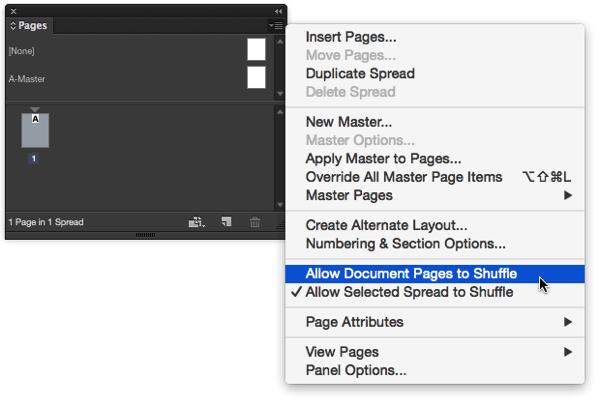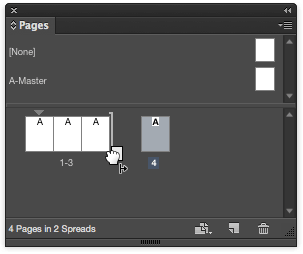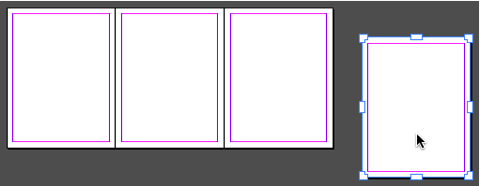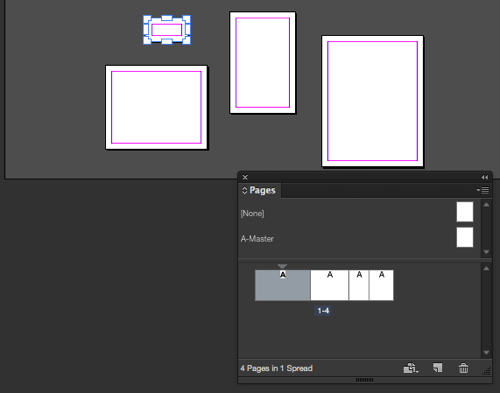Making InDesign Work Like Illustrator: Multiple Artboards on One Large Pasteboard

Some people are used to the way Adobe Illustrator works and get frustrated with they work with InDesign. There are actually a lot of similarities between the two applications, but how they handle their workspaces is definitely very different. In InDesign, “pages” live in “spreads” and each spread has its own “pasteboard.” In Illustrator, one or more “artboards” live on one giant “canvas” (or “workspace”).
But did you know that you can make InDesign work kind of like Illustrator? You can make a bunch of “artboards” (pages) on one “canvas.” You can even make the artboards overlap and share artwork among them!
The Trick
Here’s the trick to making InDesign act more like Illustrator (at least in how it handles its pages):
First, make a new document and in the New Document dialog box, turn off Facing Pages:

Second, in the Pages panel menu, turn off Allow Document Pages to Shuffle:

Third, add some pages, just like normal (e.g. you can click the New Page button in the Pages panel):

Fourth, use the Selection tool to drag the pages over to make them into one big spread. The key is to drag the page until you see a small black arrow indicating where the page will land. In the following image, page 4 is being dragged over to be added to the spread that already contains pages 1 to 3:

Now you have a bunch of pages in a single spread, and each one is right up next to the other.
So zoom back until you can see all the pages in your document window, switch to the Page tool (Shift+P), and then drag the pages around:

Remember that when the Page tool is selected, you can also change the size of the page in the Control panel. You can even change its orientation! And you can drag it anywhere on the spread… I mean, um, canvas, that you want!
The only problem is that the Pages panel can’t keep up with what you’re doing. I kind of reflects the page size change, but not very well; and it definitely doesn’t reflect the page positioning. So you get a weird effect like this:

The crazy thing is that you can even drag the pages around so that they overlap. When that happens, any text or graphics that fall in the intersection actually show up on both pages when you print or make a PDF… just like it works in Illustrator!

Look, I’m not saying that you should use InDesign instead of Illustrator! (Mordy would never forgive me.) But you can make InDesign act a bit more like Illustrator, in case you feel more comfortable this way.
(Now if we could only get the 3D Extrude feature in InDesign…)
This article was last modified on July 25, 2019
This article was first published on February 4, 2015




